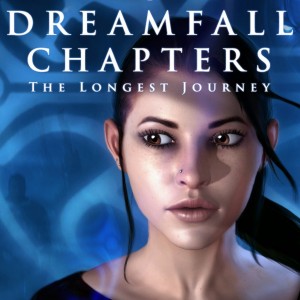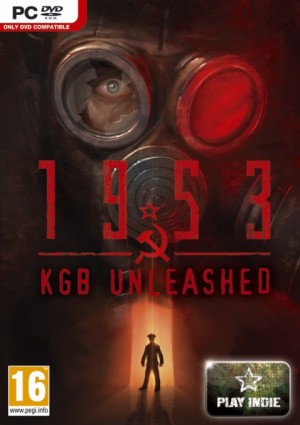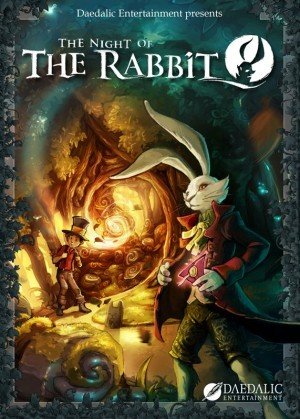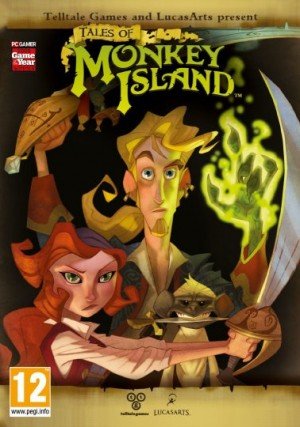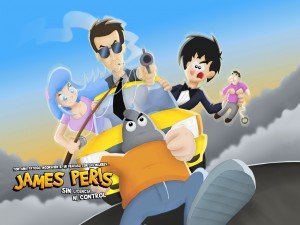Dreamfall Chapters - Ragnar Tørnquist interview
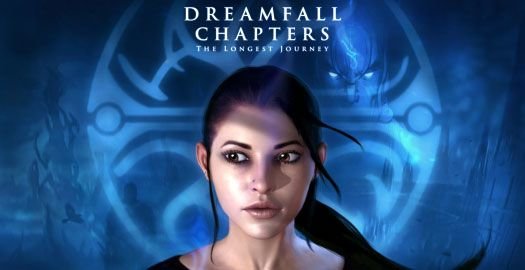
Ragnar Tørnquist surprised and delighted many adventure fans when he recently formed his own studio, Red Thread Games, and announced that the team would at last be giving us a new installment in The Longest Journey saga. Since then, the overwhelming response to Dreamfall Chapters on Kickstarter has offered definitive proof that TLJ remains of the most popular adventure game franchises of all time. With the fundraising campaign soon drawing to a close, we had a talk with the acclaimed writer/designer to chat about the past, present and future of Stark, Arcadia, and his independent development studio in Norway.
Ingmar Böke: Hello Ragnar, it’s my pleasure to welcome you to Adventure Gamers. You recently launched your Kickstarter campaign for Dreamfall Chapters with enormous success. Obviously The Longest Journey saga has tons of loyal fans that have waited for this moment for many years, but did you ever expect SUCH an overwhelming response to your work? And what are your thoughts on the campaign so far?
Ragnar Tørnquist: Hi, and thank you! No, we really did not expect such an overwhelming response to our Kickstarter campaign. Our most optimistic projection was $200,000 in the first twenty-four hours, and we didn’t really think we’d get that much.
We made more than twice that in less than a day, and we were completely blown away by the support and generosity of our fans.
We were expecting to be biting our nails from start to finish, but we met our original target in a week, and we recently passed the $1 million mark, which is amazing. There’s only a handful of games that have made this much money, and we’re both honoured and humbled to be amongst them. Our fans are simply incredible, and there are apparently a LOT of them. More than we thought.
Ingmar: What lessons did you learn from previous crowdfunding campaigns, and which positive examples influenced your own Dreamfall Chapters campaign?
Ragnar: We looked closely at pretty much every big Kickstarter there’s been, from Double Fine Adventure and onwards, but the campaigns we’ve learned the most from were Project Eternity and Broken Sword. Those two provided the model for what we wanted to do and accomplish, and we felt both were very well run campaigns that reflected the level of ambition and professionalism we were aiming for.
We spent many months analysing other campaigns and building our own, before we felt ready to launch, and that time – all the research and analysis – was definitely time well spent.
Ingmar: I’d love to crunch some numbers. $850,000 (really less, after all the Kickstarter expenses) plus a $175,000 grant from the Norwegian Film Institute to develop the prototype doesn’t sound like much for such an ambitious project. You stated before that there will be some more money from other sources, and your campaign has already gone over its minimum target, but presumably you will still have a budget that’s a lot smaller than the one for Dreamfall. Can you compare it with the budgets of TLJ and Dreamfall, and explain the financial situation for Dreamfall Chapters in detail?
Ragnar: I can’t go into all the details, since some things are still in flux, but the budget for Chapters is definitely lower than the budgets for both TLJ and Dreamfall. I can’t remember the exact numbers, but I would guess TLJ cost about $2-3 million, and Dreamfall probably twice that, maybe around $5 million. Of course, we had a lot of inexperienced people – including myself! We pretty much built our own engines and all of the tools, and we lacked the management experience to have an effective and optimal production pipeline.
With Chapters, we have an established, functioning engine in Unity; we have a highly experienced and motivated team that has worked together in the past; and we have key learnings from previous games, which allows us to design more efficiently and to not waste time on content and features that we need to cut.
The Kickstarter money won’t be enough on its own, but combined with our own funds, the grant we’ve received, and some other sources of income, we will be able to bring the game in on time and budget – a lot cheaper and a lot more efficiently than a larger developer would be able to.

Autumn in Marcuria (in-game screenshot from Dreamfall Chapters)
Ingmar: Can you give us an idea of what that efficiency means when it comes to the creation of Chapters?
Ragnar: It simply means that we are able to plot out the story and gameplay in detail and to stick with that plan. We will still do tweaks along the way, of course, and we will still need to change things when we start testing and playing the game, but much less so than with previous projects. We also know exactly where the story is heading and where it ends, and we can focus on telling that story and wrapping up all the loose threads. In addition, we have so much experience budgeting and managing large projects, it’s going to be a lot easier to run a small and tight team, and a game as manageable as Chapters.
There will still be hurdles and surprises, of course, but we know how to handle those. We are capable of making the right changes at the right times, simply because we’ve done this so many times before.
Ingmar: Since you’re working with many familiar faces at Red Thread Games, now's a good chance to introduce the team.
Ragnar: We have a bunch of people from the Dreamfall core team, including art director Christer Sveen, co-writer Dag Scheve, technical directors Eigil Jarl Halse and Kjetil Hjeldnes – who also worked on The Longest Journey – and Sigbjørn Galåen. On the technical side, we have my brother Audun, who also worked on TLJ, along with Quintin Pan, who has experience from The Secret World. On the management side, there is Rakel Johnsen, who was senior project manager on The Secret World, and of course we have Martin Bruusgaard onboard as lead designer – he held that position previously on The Secret World.
We’re going to add a few more people to the team in the months ahead, but we don’t plan on growing too big. At least not yet.
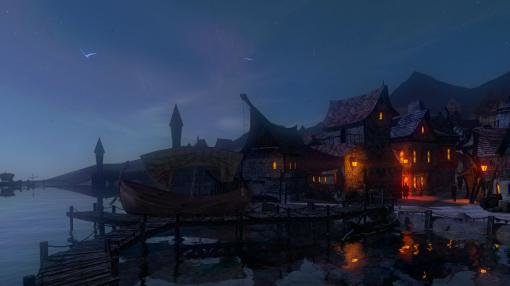
Sunset in Shady Quay (in-game screenshot)
Ingmar: I imagine you must have a feeling of unlimited freedom right now. Talk about the mood at Red Thread Games at the moment, and how this independence from publishers is the model of the future.
Ragnar: The mood is great at the office! I think everyone feels privileged and lucky to be able to work on this project at this time, and to have received so much support and love from our community. We know that this freedom isn’t unlimited, and that it comes with a lot of responsibilities, but we also know that we are the architects of our own fate, and that it’s entirely up to us to make a great game and to tell a good story.
The crowd-funding model is definitely one that will have a great impact on how games are made. It’s not going to be the way ALL games are made, obviously, and this model isn’t for everyone, but for us it’s changed everything – it’s allowed us to take charge and forge our own path. It’s allowed us to approach this game on our own terms, with our fans and supporters in mind, and to avoid the whole process of selling an idea to a publisher and making compromises in order to raise money. We have an audience, and that’s who we’re making the game for: adventure gamers, players who love great stories and characters, who can appreciate a challenging and mature game, and who are looking for more depth, more meaning, more soul.
Ingmar: Let's talk about the actual game now, starting with what you can tell us about the plot of Chapters. I'm sure you’re keeping many things tightly under wraps for now, but perhaps you can tease us a little.
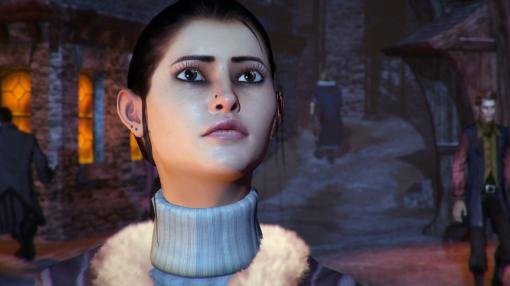
Zoë Castillo (in-game screenshot)
Ragnar: The story starts where Dreamfall left off. Zoë is in a coma, trapped inside the Storytime. The resistance in Marcuria has received a serious blow. WatiCorp’s Dreamer has been released. Things are looking quite bleak. It’s almost a year since the events of Dreamfall, and players have to help Zoë confront her past self, her fears and hopes and dreams, and to be reborn into the world...
I don’t want to spoil too much, but I can safely say that most of the questions players had at the end of Dreamfall will be answered, or at least addressed, and that we will resolve the cliffhangers that players may have been frustrated with after the previous game.
Ingmar: When people hear the word “chapters”, many probably think about episodic games, when in fact that idea has been abandoned for a while now. So... since Dreamfall Chapters will NOT be an episodic game, please explain the context of the word “chapters” for this game.
Ragnar: Chapters refers to the chapters of life, to the passage of time, to the phases we pass through on our journey from birth to death. It’s the theme of the game, and a really important part of the story itself. Dreamfall Chapters also takes place over almost a whole year; seasons pass along with the chapters in our characters’ lives.
Ingmar: Dreamfall did a fantastic job in merging gameplay and story as closely as possible. I’d say one of the reasons for that was the departure from classic adventure game patterns – a concept that subsequent projects like Heavy Rain and The Walking Dead have had enormous success with as well. You say, however, that Dreamfall Chapters will return to your adventure game roots in terms of more puzzles. Isn’t there a conflict between the connection of gameplay and story and using traditional (pre-Dreamfall) adventure game mechanics? Or am I getting this wrong and the game mechanics (minus the action and stealth sequences) will be closer to Dreamfall than I understood?
 |
Ragnar Tørnquist |
Ragnar: Yes and no. We intend to take the best parts of The Longest Journey and mix them with the best parts of Dreamfall, but with the focus primarily on the narrative drive. We don’t want players to get stuck on obscure puzzles that feel out of touch and out of sync with the story, but we also don’t want players to feel there are no challenges, no sense of satisfaction, when it comes to the gameplay. Mechanically, the game will be closer to Dreamfall, but without the aggravation of the stealth and combat sections.
Ingmar: Speaking of which, you've clearly stated your opinion that the stealth and combat elements really didn't work too well in Dreamfall. What makes you feel that way, and what lessons does that provide for Dreamfall Chapters?
Ragnar: I don’t think there’s anything fundamentally wrong with incorporating different mechanics in an adventure game, even stealth and combat, but they have to be done well and in a way that’s appropriate for the genre.
With Dreamfall, we failed to make those mechanics fun. They felt frustrating and got in the way of the player’s enjoyment of the game and the story flow. They were also quite buggy and unfinished at times. It wasn’t supposed to be like that, but technical issues with the engine and a lack of experience on the team meant that we couldn’t follow through on our vision – and that’s something we should have seen sooner.
But I’m still fiercely proud of the game, and I think the positives far outweigh the negatives.
Ingmar: One statement from your Kickstarter page leaves room for interpretation: “Dreamfall Chapters is a 3D adventure game where the player controls a character through interactive and immersive environments, using a combination of point-and-click and direct control. The game supports both keyboard/mouse and a joypad, but it's designed primarily for the PC.” Can you please clarify how the controls of the game will work?
Ragnar: We have actually shown the gameplay live in a video from our early prototype.
Dreamfall Chapters prototype footage
I think this video illustrates the gameplay better than I possibly could. The game is designed primarily for mouse/keyboard, but we will also support a gamepad, and it will work quite well with that device as well.
Ingmar: I found a quote on your website that contains everything I expect from an interactive story medium, but rarely get from many other developers:
Our goal is to make games where stories and characters are in focus, games with mature themes, diverse worlds and moral complexity. Games that don't underestimate our players. Games that treat players with respect. We believe that games are as powerful a storytelling medium as any other and should be treated as such, and that games should be emotionally engaging and challenging. We believe that games are art. We believe that games can have a soul. And it's our mission to find that soul.
People like you, David Cage and Jane Jensen have proven the truth behind such a statement, but if I look at (adventure) games as a whole, it seems like we’re far from realizing that aspiration. What’s your current take on the overall state of mature and emotional storytelling in the industry, and what has to happen before enough people realize the opportunities we’d have if more developers would follow your route?
Ragnar: I think there are a lot of good stories out there, a lot of great writing, and it’s important to remember that our medium is still evolving. It’s still early days, compared with other media. Games are challenging to make, they take a long time, and most developers – even old-timers like myself – haven’t had a chance to make enough games yet to really change the way we approach interactive storytelling. We’ll get there, hopefully before I’m forced to retire!
For me, last year’s best adventure game was Journey, on the PlayStation 3. It may not be a traditional adventure: you don’t have an inventory, you don’t talk to any characters, but you do explore a fantastic world and you experience a narrative that’s lightyears beyond that in most games. Journey made me feel so much, and I’ve played through it three times already. Every time, I feel something new. And this is where games are so powerful: they engage you and immerse you and make you part of their worlds and their narratives in a way that traditional, linear media simply can’t.
I think games have come a long, long way, and while there’s still plenty of room to grow, we should really be appreciative of how much great storytelling and great art there is in games these days. I feel so lucky to be working in our medium, and to be able to hone my craft, learn from the best, and tell better and better stories. I don’t ever want to do anything else.
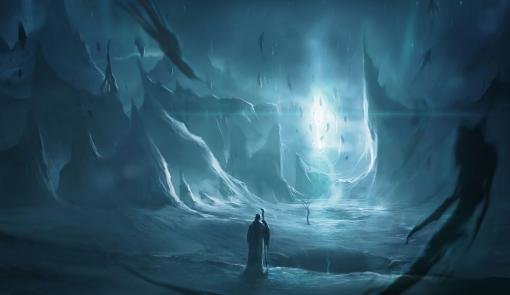
The Storytime
Ingmar: I mentioned Heavy Rain and The Walking Dead earlier. These two games are probably the hottest story-driven adventure-related projects in years, as least when it comes to mainstream attention, commercial success, and various awards. Have you played them, and if so, what’s your personal take on them?
Ragnar: I have played Heavy Rain and found it to be a thrilling and unique experience. It has its flaws, of course, but that’s also what makes it so real and immediate and intimate. It’s a very personal work, and I can identify with that.
I haven’t had much playtime with The Walking Dead yet – I’ve only played the first episode – but it’s next on my to-play list. I like that they’re approaching adventure gaming in a different way from us. I love that they aren’t afraid to tell mature stories, to challenge players emotionally, and to embrace the idea of adventure gaming in an episodic format.
Both games are brave, and both are representative of this brave new age we’re in, where risks are acceptable, and where the best developers are allowed to be auteurs and to not be forced to stick with tried-and-true formulas.

Forest in Riverwood (in-game screenshot)
Ingmar: We've talked a lot about the present so far, but I would also love to look back at how it all started for you. What was your first encounter with adventure games, and when did you realize you wanted to end up creating them yourself?
Ragnar: I fell in love with the genre as far back as Zork, by Infocom, on the Commodore 64. I found their text adventures to be really fascinating and smart, and I soon wrote my own. Peasant’s Quest was my first real text adventure, made using a program called The Quill on the C64, and I made a bunch more games – all of them lost to time and broken cassettes, sadly enough.
I was never a huge fan of the Sierra adventures – I found a lot of them frustrating and unforgiving, aside from Gabriel Knight – but I LOVED the LucasArts ones; the humour, the great art, the fun characters, and most of all the writing. I was a writer myself, from a very early age, and I was blown away by the quality of their dialogue, stories and characters. My favourite adventures were the Monkey Island games, Full Throttle, Loom, and, of course, Day of the Tentacle – the best adventure game ever made, and one of the best games of all time.
I hadn’t really planned on making adventure games professionally, however, but when the opportunity came to create my own game, in 1996, it quickly turned out to be a point-and-click adventure. It was the genre I felt the most comfortable with, where I could contribute the most – both in terms of design, story, characters and dialogue; my background and education in film helped a lot – and where I felt I could make a difference.
What I always loved, and still love, about adventure games is the feeling of stepping through a doorway into another world, where you can explore, talk to characters, and take your time without feeling constantly pressured to move on, to compete, to get more points. I can immerse myself in their worlds, dream about them, investigate and explore, without the pressure of a more competitive or action-driven game. That, to me, is the magic of adventures.
Ingmar: Being a huge fan of mature storytelling, I remember how Gabriel Knight: Sins of the Fathers shook my whole world in 1993 and gave me an experience I'd never had before with a game. I know you like the game as well, so I’d like to hear about your experience with it.
Ragnar: Gabriel Knight blew me away. It was so different from everything else out there. It felt real; the characters weren’t caricatures, they were people. The locations felt lived-in, not fake, not mere sets. They had texture, character and history. And the story... It was so well researched, deep, mature. It really was such a departure from a lot of what had come before – aside from Infocom’s games, of course, but those were text-only. This game was beautiful, rich, wonderfully animated and voice-acted. It was like a movie, or a book, or a graphic novel, where YOU were in charge. It changed how I perceived adventure gaming, and it was a heavy and lasting influence on TLJ.
Ingmar: The Longest Journey became one of the most critically acclaimed adventure games of all time, which is quite impressive for someone’s first (major) title. How was the idea for the game and the whole universe behind it born? What influenced you at the time, in terms of games, movies and books?
Ragnar: My influences were many, but the key ones were the Vertigo comic-books, primarily Sandman by Neil Gaiman, Hellblazer, Swamp Thing, Books of Magic... The TV show Buffy the Vampire Slayer, of course; Joss Whedon’s writing was a massive influence on me at the time, and still is. He’s one of the finest writers around. Myths and fairy-tales – those have always been a big part of my life, and they affect everything I write. I’ve always immersed myself in fantasy universes, and it was relatively easy for me to imagine a brand new one.
I’m constantly inspired by everything around me – people, books, films, TV shows, comics, sights and sounds, nature – everything. It’s hard to pin down one source of inspiration, when everything around me inspires me to create.
Ingmar: Please give us an overview of developing The Longest Journey, including any anecdotes that come to mind.
 |
Ingmar Böke and Ragnar Tørnquist |
Ragnar: It’s such a long time ago, it feels like a different lifetime altogether. It was a very unique experience for all of us; a small team, working without any guidelines or restrictions – aside from time and budget, of course – and doing something none of us had done before: creating a point-and-click adventure from the ground up. Our own tech, our own tools, 3D characters on 2D backgrounds. It was a real learning experience and, looking back, it’s almost a miracle that we managed to make the game we made.
The whole team worked incredibly hard to finish the game, since we were running quite late – it was, after all, our first fully independently produced project, with a lot of unknowns and a massive amount of art, gameplay and voice-overs. We worked every weekend for over a year, and I distinctly remember arriving at the office one Sunday in the early afternoon, and working nonstop until Tuesday morning, when I fell asleep in front of the computer and drooled all over my keyboard. Good times!
I think we were all completely exhausted by the time the game shipped, but it was worth it. Everyone who worked on the game is very proud of it. We never believed it would still be remembered, much less played, fourteen years later, and it’s really humbling to us to have contributed to something that evokes so many positive and lasting emotions in so many people.
Ingmar: The sequel was created at a time when no publisher would have invested a similar amount of money into an adventure game. How did you manage to make Dreamfall happen with such a big budget, and in what ways did you have to compromise?
Ragnar: We didn’t have to make any compromises at all. Every design and story choice in Dreamfall was made by the team, and we were given free reins to create the follow-up to The Longest Journey.
Funcom was very proud of the first game, and there was a lot of support for doing a sequel, although no one really knew how to market the idea of an adventure game at a time when, as you say, adventure gaming was considered a dead genre. That’s also why we targeted the Xbox. Being on a console helped make the game more attractive, both internally and to publishers, and while the Xbox version did impose severe restrictions on the PC version, I’m also quite happy and proud that we managed to make a console adventure game.

Ingmar: Any special memories about the creation of Dreamfall?
Ragnar: We were in constant crunch, and the dual development on Xbox and PC took its toll. In many ways, Dreamfall was a more grueling project than TLJ; maybe the expectations were higher. The stakes were definitely higher, with a bigger team, a bigger budget, and all the fans waiting for every little snippet of information. We were concerned, of course, that we wouldn't be able to meet all the expectations – and that's also why we decided to make Dreamfall a very different game from TLJ. It was never meant as a sequel; instead, it was a follow-up, set in the same universe, but telling a different story. This wasn't really April's story: it was the story of the Dreamer, of Zoë Castillo, and it was never meant to be TLJ 2.
We did have a great team, however, and we're lucky to have brought many of the old team members back for Chapters. It's almost like being transported back to 2004 in a time machine – in a very good way. Except that we're going to make a much better game this time around.
Ingmar: If you had to pick the elements of both The Longest Journey and Dreamfall that you are most proud of, what would those be?
Ragnar: The fact that both games have soul. They feel real, genuine, truthful and alive. The characters are people you can empathise with, the worlds appear lived-in, not just stage sets, and the themes resonate with players. Both games are very personal, almost intimately so, and that’s something that shines through, I think. We put a lot of ourselves into the games, and while they may be rough around the edges, and while not all surfaces are polished and shiny, they feel handcrafted – made by actual people, not just your typical factory-made, mass-produced ‘products’.
I’m proud of both games, despite their flaws, because they are stories that players care deeply about. This is why the games endure. They have soul.

Europolis revealed
Ingmar: There have been some rumours about porting The Longest Journey and Dreamfall to mobile devices. Anything you can say about that? What’s your take on this market in general?
Ragnar: Funcom has been working on an iOS version of The Longest Journey, and the last time I saw it, it was very playable, looked great, and was almost finished – but I’m not sure exactly how far away from release they are with that. I think the game works great on mobile platforms, especially the iPad, and I hope it will see the light of day sooner rather than later.
These platforms are great for adventure gaming, particularly with a touch interface. They bring you closer to the story, and the mechanics don’t require quick reflexes – perfectly suited to mobile gaming.
Ingmar: Not every adventure fan may be familiar with what you been doing since the release of Dreamfall. Give us an idea of your activities during that time, and explain why there was no way to create a sequel to Dreamfall before the Kickstarter era.
Ragnar: From 2006 until 2012, I worked on The Secret World, a story-driven online role-playing game. It was a massive project, with a team of almost two hundred people, and it was a vastly different experience from making The Longest Journey and Dreamfall. The game was orders of magnitude more complex in every single area, from the massive amount of content to the online technology, and it made working on a single-player adventure game feel like a cakewalk.
A lot of the core team from Dreamfall worked on The Secret World, and therefore we couldn’t really get started on Chapters until after The Secret World had shipped, and the resources were freed up. As soon as that happened, I started working on procuring the license to make another game in The Longest Journey universe, which resulted in me setting up a new, independent development studio: Red Thread Games.
Founding Red Thread gave me the freedom to get started on Chapters, to go on Kickstarter, and to bring the original team back together. We have licensed the rights from Funcom, but otherwise we’re completely on our own.
Europolis in action
Ingmar: Since teasing fans with your $2 million stretch goal on Kickstarter, there's been much speculation about about "TLJ Home". Anything you can tell us about that?
Ragnar: No, not yet, but keep your eyes open! More information will be arriving very, very soon.
Ingmar: Unless I'm mistaken, Chapters will resolve Zoë's story, but not necessarily April's. Will we be seeing more adventures in the TLJ universe in future? When looking into the future of Red Thread Games, what is it you see in your crystal ball beyond Dreamfall Chapters?
Ragnar: We have tons of ideas, of course, but right now our focus is squarely on Dreamfall Chapters, and it will remain so for the next year and a half. There might be more games in The Longest Journey saga, and there will definitely be other stories and other universes. Our focus will always be on story-driven games with strong characters, themes and challenging gameplay ideas.
Ingmar: Thanks a lot for doing this, Ragnar. Most appreciated! All the best with Dreamfall Chapters and your new company.
Ragnar: Thank you very much!




